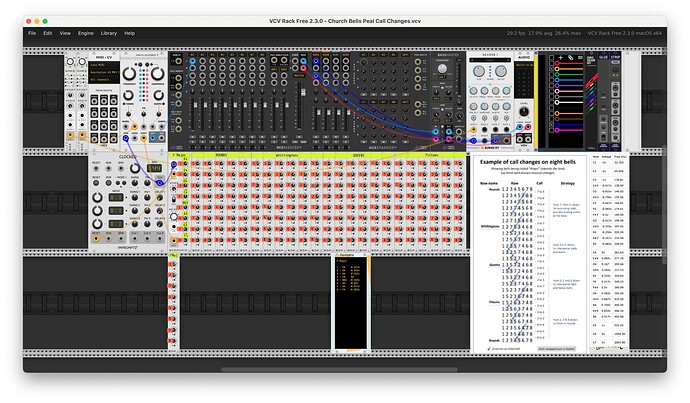Bellringing isn’t my thing, but I’ve been meaning to build this sequence as an exercise. There are many traditional patterns (or Peals) in British bellringing, and with 8 bells most would take many hours to play through. I decided to leave that for another time (and possibly another sequencer) and concentrate on the Changes.
This is a single voice from Plaits, modulated to produce the scale of F major in 8 notes. I used Bassmaster to make the lower bells sound louder, and of course reverb to give the impression of distance and echoing from the bell tower. I added a bit of swing to make the timing a bit off, because bellringing is not a precision activity, apparently.
The Church Bell sound using Plaits is from someone else (can’t find the post) and there is a post from @john_rose here ISO: Router that can swap a random pair of in→outs? - #20 by Epaulard about automating the changing sequences, and more.
Church Bells Peal Call Changes.vcv (21.0 KB)

